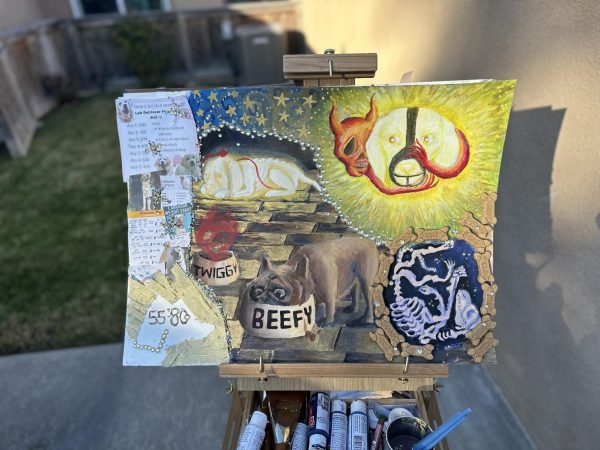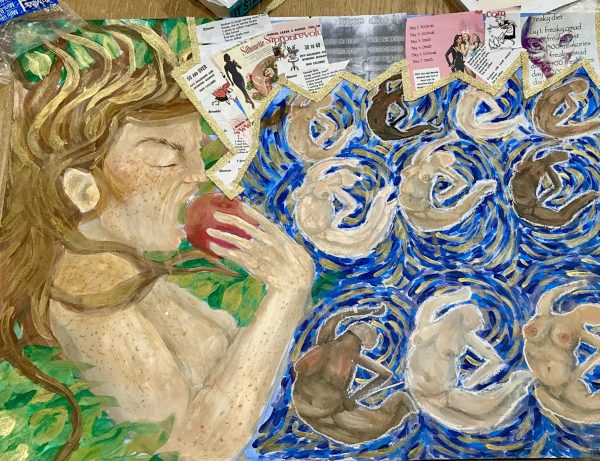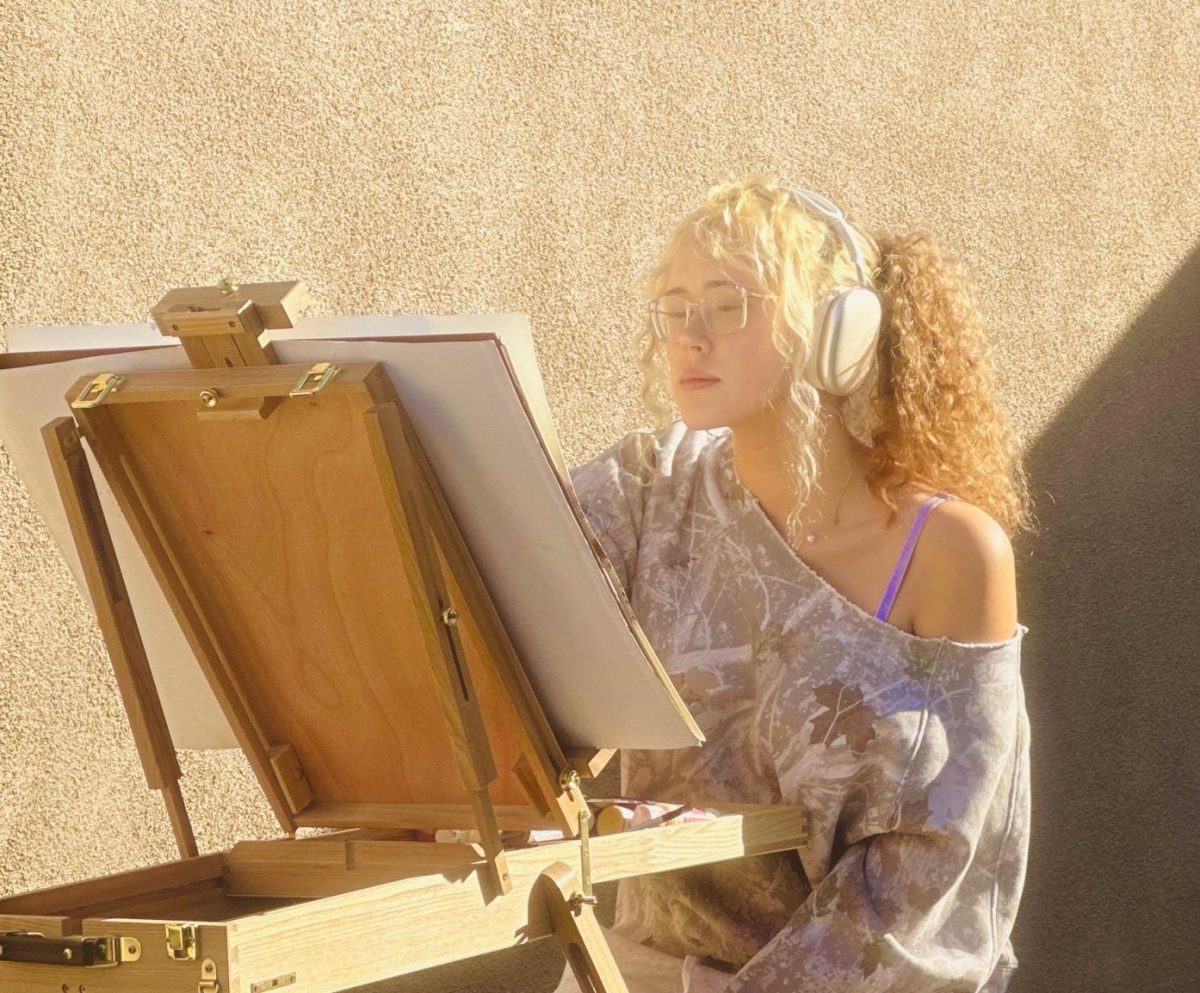Acrylic paint, pencil, rhinestones and even dog treats. No matter the material, sophomore Nova Hattingh draws inspiration from all around her, using different mediums, materials and types of art to convey a purpose to the viewer. She’s utilizing this passion in her first official portfolio that she is accumulating, which is centered around anorexia. Hattingh chose this topic with the desire to have her art centered around a topic that was meaningful enough to spur inspiration.
“I never see any art pieces about anorexia, I see them about depression or anxiety or a million other things all the time, but I’ve yet to see a solid portfolio on anorexia, and I know a lot of people in my life who have been affected by it,” Hattingh said.
Hattingh believes that growing up in an art orientated family familiarized her with art and influenced her to pursue it. At first she thought of it thinking of it as a relaxing hobby, and later focusing on refining her skills and spending more time on it after seventh grade.
“I have a lot of people who have or had art careers in my family, my great grandpa has his own collection at Berkeley. I’ve grown up around it, and it just came to be really stress relieving to be able to draw, and being surrounded by that. When I started thinking about what I wanted to do in the future, I became a lot more passionate,” Hattingh said
She also finds inspiration from other artists; whether her friends in her AP Studio Art class, or old paintings in museums that speak to her, which encourages herself to go out of her comfort zone and try something different.
“I really have a thing for old Renaissance paintings. There’s this one painting called ‘Ophelia’, and one of my final pieces is going to be centered around that. I’m really excited,” Hattingh said. “I do not gain inspiration from [modern art] at all, and I feel like those are the main ones I see nowadays, the ones of just straight canvases.”
Hattingh mostly enjoys working with acrylic paint and occasionally colored pencils and watercolor, but she’s working on incorporating new and different mediums into her work.
“I definitely like to experiment with different supplies. I’ve never [used] oil paint in my life, and I literally just started. I also like to do a lot of things that I know definitely push my limits.” Hattingh said.
Hattingh enjoys realism and surrealism, and drawing people and anatomy. Her personal style includes using layering and composition, which is her favorite part of her work, to give the pieces a sense of completion and cohesion.
“The way I do most things is I have a base painting, [which is] the opposite of minimalist. I put a lot of other things on my paintings besides just paint, like collages and rhinestones. In one of the pieces I just submitted I put a lot of dog treats on it. It’s really time consuming and I just feel like it always looks so good at the end.” Hattingh said.

Outside of art, Hattingh is also interested in engineering and space, and she plans on incorporating her passion for creativity with her future career, hoping to find a job that merges her artistic talent with her interests in STEM, math and science.
“I would say it would be amazing if I could do that (art in career) but I do know that it’s a little bit hard to solely have a career based on art. So I think I personally am really into STEM and I really love math a lot. Honestly, the one thing that would mix art into it would probably be architecture or something. My main interests are aerospace engineering and rocket science,” Hattingh said
Sophomore Riley Montoya, Hattingh’s “best friend of almost a decade,” has noticed the progression of Hattingh’s art style and passion through the time she’s known her, and how she’s accumulated aspects to make it her own.
“She’s good at realism, shading, and proportions on people and animals. But there are a lot of surrealist and aspects of collage [to her work] so it’s pretty unique […] She’s developed the style by herself over time,” Montoya said.
According to Montoya, Hattingh’s art style correlates to her personality and reflects her thought process, representing who she is.
“[When you look at] her art it’s all over the place, you see the cutouts of paper, you see her […] I think her art shows how her brain works, it’s visualized when she paints something,” Montaya said.
Hattingh views art as an instrument for instilling empathy in today’s society, and expanding people’s connection and understanding of each other.
“It’s a really beautiful form of expressing things that maybe you can’t put into words, and I think just being able to make something that inflicts any sort of emotion on a person when they see it is such a powerful tool,” Hattingh said. “It can really help people understand deeper concepts or emotions.”




